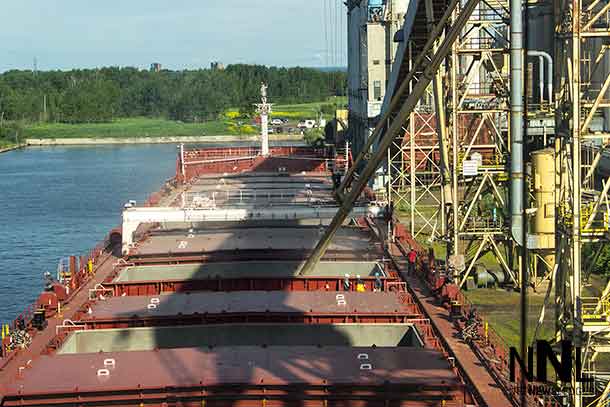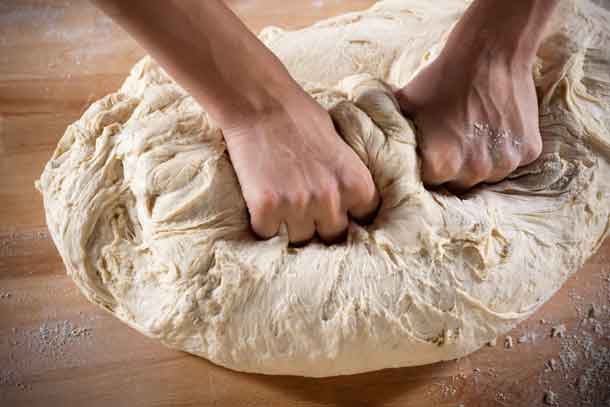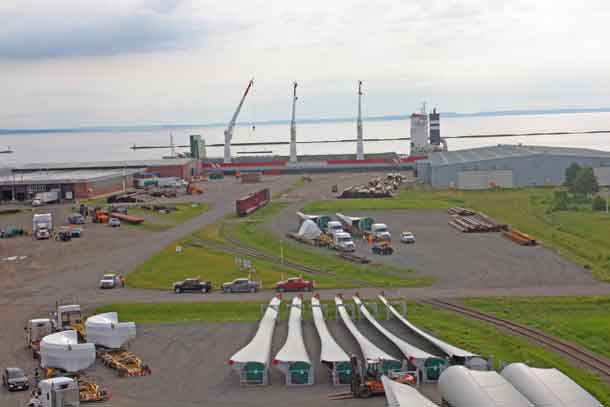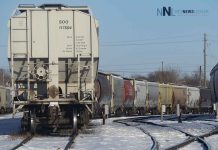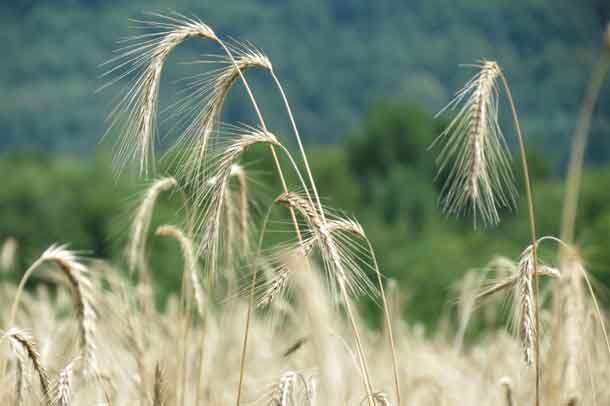
Final yield and crop quality report for 2021 Crop Assessment Tour
CHATHAM, Ontario – The Great Lakes Grain Crop Assessment tour has concluded now in its 13th year. The tour spans all of Ontario from Windsor to Ottawa. Great Lakes Grain staff including their FS System partners from across Ontario have assessed over 900 corn and soybean fields
The Great Lakes Grain Crop Assessment Tour has been conducted each year since 2010 to assess the size of the Ontario crop as well as give growers a better understanding of how their crop is performing compared to others in the province. It allows growers with their agronomists and grain marketers an opportunity to refine their management plans for future improvements in production and marketing.
The growing season was variable across the province to say the least. Crops for most of the province were planted in the seasonal time frame. However, heavy rains following planting in many areas caused some replanting and lower population stands. This was followed by a drier than normal period through June and July with some area’s barely having any measurable rain fall. Overall, we expect the Ontario corn and soybean crops to be about average.
The Great Lakes Grain Crop Assessment Tour yield determination focuses on the yield components. In corn that is the number of cobs per acre multiplied by the number of rows and the number of kernels in the row and the kernel weight. At the time of the yield estimations kernel weight is the unknown factor. We use 90,000 kernels per bushel. This varies greatly by hybrid and weather during grain fill. It can be as low as 57,000 to as high as 105,000 kernels in a bushel.
This factor can have profound effect on yield estimations. Final kernel weights can be determined after black layer by collected harvested grain and obtaining the actual weight of a thousand kernels (TKW). The final kernel weight is influenced heavily by the duration of the grain fill period. This is a function of the kernel lag phase from R1 to R3 which determines the size of the kernel and the linear phase from R4 to black layer R6 which is function of the rate of grain fill and the duration. The reproductive stages from R1 to R6 are heavily influenced by an adequate nitrogen and balanced supply of all essential nutrients, healthy plants with green leaves, and of course timely rainfall during the grain fill period. The wide spread differences in late season rainfall and soil conditions will be a major factor in the determination of the final kernel weights and yields. Not only did yields vary greatly within each field, field to field variance was large due to the spotty rainfall this past season.
The dry weather limited some nitrogen and potassium uptake on corn. This is confirmed with deficiency symptoms on the lower leaves expressed as a chlorosis and later followed by necrotic tissue. Nitrogen starts at the tip and moves down the center of the leaf mid rib whereas potassium also starts on the leaf tip but moves down the margin of the leaf. The symptoms are of course more severe when the nutrients are limited due to low soil test levels and or inadequate application of nutrients. The moisture stress on crops serves to amplify other issues apart from nutrient supply such as soil compaction.
Foliar leaf disease in terms of incidence and severity was relatively minor in a majority of the fields. Tar Spot did start to develop after R5 which has a minor impact if any on yields at this growth stage. Most corn fields will black layer in the next week so any impact on loss of green leaves at this point will not likely impact much on kernel weights. If conditions stay favorable for disease progression, we will see a rapid loss of green tissue. It remains to be seen what impact it may have of grain dry down rates, stalk integrity and standability. Certainly, it will add to the inoculum load in the fields going forward
The yield components in soybeans are the number pods per acre multiplied by the number of beans per pod divided by a bean size factor. This year we used 3100 seeds per pound for the conversion.
The soybean crop seems to offer more yield stability within fields and between fields with more consistent pod counts, the average number of beans per pods is still 2.5 beans. The difference between this year and last year is a slightly lower pod count and smaller bean size in 2022. This will lower the yield estimate but still produce respectable yields. We did observe a difference in planting dates on yields. It seems soybeans planted before May 15 may have been impacted more at R1 by heat and lack of moisture. Soybeans planted after May 15 to May 20 may have found that sweet spot for pod retention. Of course, the later planted beans yield less regardless of the year. Full season beans seemed to take advantage of any August moisture to fill pods at the top nodes.
The drier weather influenced nutrient uptake. Wide spread Manganese deficiency along with some potassium deficiency symptoms were readily observed. Manganese deficiency was alleviated by a foliar application and some fields required two applications to relieve the symptoms. Yield response in the past to a foliar application averaged from a typical 5 bushel to 20 bushel per acre when severe.
Some potassium deficiencies were observed further up in the canopy when late season pods were filling and drawing potassium from the nearest trifoliate.
Root rots in some clay farms were a bit of a surprise to see during dryer weather. There must have been enough moisture early on for infection and the dry weather was the tipping point of added stress to increase the severity. White mold was very isolated, in thinner stands Septoria Brown Spot was further up the canopy than normal.
Japanese Beetle feeding appears to be on the increase but still well below action thresholds.
Perhaps the most troubling development is the increase in multiple modes resistant water hemp populations in soybeans. Either an escape, miss or an ineffective herbicide choice. Regardless this weed will need a diligent effort over several seasons to lower the seed weed bank to get it under control.
The GLG Crop tour is focused on yield estimation however being in the fields to observe crop program performance is always informative. On the crop nutrient part follow the 4 R Stewardship practices and work with current soil tests no older than 4 years to effectively manage the rate, source, timing, and placement of all nutrient sources.
Below are the average yields that we have determined.
Don Kabbes, Great Lakes Grain General Manager, states, “the tour allows us to observe crop performance on the farms of our customers, and gain valuable insight into what is working and where the opportunities are for improvement.”
Great Lakes Grain is a grain marketing partnership between AGRIS Co-operative Ltd., GROWMARK, Inc. (including FS PARTNERS, a division of GROWMARK, Inc.) and Embrun Co-op. Great Lakes Grain is one of the largest operators of Ontario country elevators. It represents close to 22 million bushels of storage capacity with total marketing in excess of 50 million bushels. Great Lakes Grain serves farmers out of 27 AGRIS Co-operative, FS PARTNERS and Embrun Co-op branded locations that span from Windsor north to Georgian Bay and to the Ottawa Valley.
Visit us at www.greatlakesgrain.com for more information.

